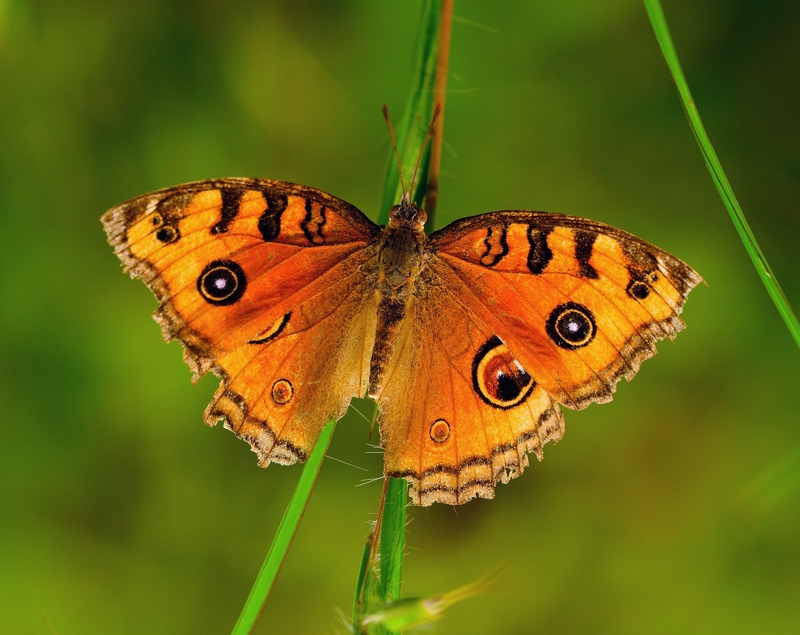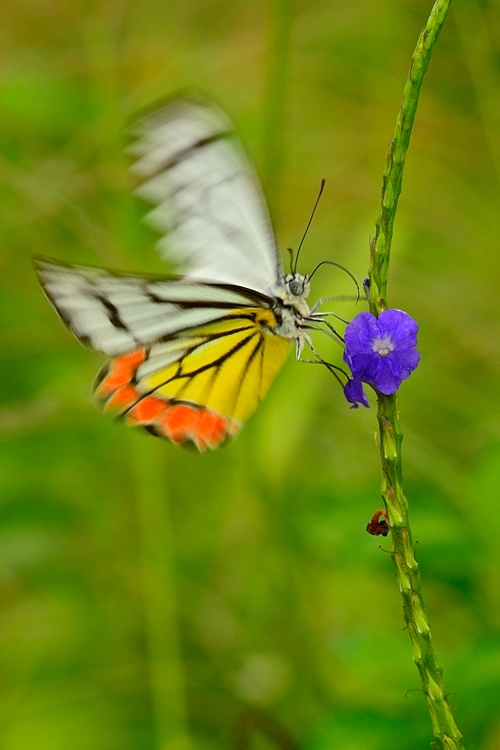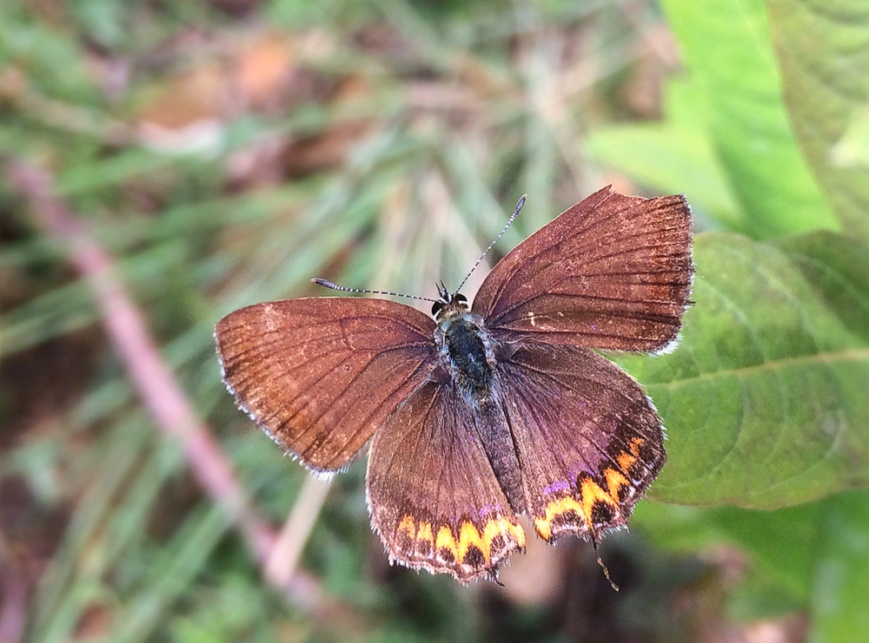Butterflies are some of the most beautiful insects and understandably they catch the fancy of every photographer. Technically good images come out as great photographs because of their beauty.

(Tiger Butterfly – a common butterfly in India. Nikon D200 with Sigma Macro 105mm lens, f/8, 1/320 sec. Available at shutterstock for purchase – Purchase at Shutterstock)
The photograph above is one of my favorites when it comes to butterflies. The sun was almost at ninety degrees to the butterfly’s wings. Disregarding the general rule, that the sun should light up the wings directly, this particular angle of sun brought out the details in the wings’ scales. Texture is visible. A little bit of sunlight that directly falls on the wings, also brings out the colors of the wings. The blurred dark background increases the impact. Placement of the butterfly and flowers within the frame balances the overall composition.
Photographing butterflies has been a rewarding learning experience for me. I understood their life cycle and their habits. I now make sure not to unknowingly spoil their habitat. In my own home garden, I have stopped using pesticides and other chemicals that are harmful to them. Butterflies are happy and they thank me by paying visits to my garden. They let me photograph them.

(Butterfly – A beautiful photo of a not so perfect specimen. A lesson learnt!
Nikon Df with Sigma 105mm lens, f/8, 1/250)
Some of the tips that I have gathered from naturalists, nature lovers and butterfly photographers –
- Learn the habits of butterflies. Knowing the plants and flowers they prefer helps in being in the right place.
- Photograph them when the weather is cold. They turn to be slow when it is cold and love to bask under the sun. This makes the cold weather with sun, the best friend for a butterfly photographer.
- As all living creatures, butterflies too are very sensitive. They detect movement very quickly. Try to approach them quietly and with minimum movement. Instead of following them around, it is best to station oneself in a most likely location and wait for them to settle down. While approaching them, do not cast your own shade on them.
- A lot of photographers use flash (speedlights) for photographing them. I personally respect them and do not use flash. With present day cameras, pushing ISO helps in low light. Even if you have to use the flash, never use the built in flash.
- Keeping the wings in parallel to the camera sensor or film plane. At close focusing, depth of field reduces. Any unwanted softness in the wings is distracting. By keeping the wings in parallel to the sensor or film plane, a reasonably sharp image can be had even at wide open apertures.
- Use a high shutter-speed to reduce the chance of camera shake and a small aperture to get the butterfly sharp. A wide aperture reduces the depth of field and improves the bokeh or the blurred background, but too wide an aperture can result in parts of butterfly, out of focus.
- Spend time with good looking specimens. Good pictures of not too good specimens (damaged wings for example) are a wasted effort.
- Do not use a tripod. It can be very restrictive. Instead learn to hold the camera steady. Monopod with a ball head works fine but not as good as holding the camera in hands.
- The butterfly eggs are tiny. Do not break any leaves or brush past any plants in an attempt to photograph butterflies. Be very very careful. There may be eggs on them which may get damaged. Learning about their habitats and favorite plants helps here.

(Butterfly. Nikon D200 with Nikkor 50mm lens, f/5.6, 1/640 sec, ISO 100)
It can seem difficult initially but with time, it gets easier and easier to find them and photograph them. I hope that I have inspired you enough to grab your camera and go out. Good luck.

(Butterfly settling in on a flower. Motion blur adds drama to the image. The head is in focus while the wings are blurred. Butterflies move their wings very fast so even a reasonably fast shutter speed can give beautiful motion blur. More on motion blurs – Creating Motion Blurs. Nikon Df with Sigma Macro 105mm, f/8, 1/250 sec)
If you spot a butterfly and you happen to be without a good camera, try using your phone. Some of the new phones have quite capable cameras that can focus close. Knowing about the butterflies can be useful in approaching them quietly and without disturbing them. Do read this – Phone camera for photography

(Not an ideal specimen of a butterfly but still using the photograph here to show that mobile phone cameras can also be useful. Photographed with iphone 5s and cropped on Affinity Photo.)

First image of the article is not Striped Tiger, instead it is Plain Tiger. – Dhirendra Swarup.
LikeLike
Thanks. Made the correction!
LikeLike